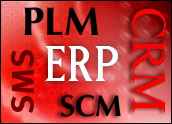
There has been so much buzz in recent years about various enterprise applications that it is no wonder many executives feel underinformed and overwhelmed.
Want to provide your global sales force with a central location in which to monitor and update sales pipelines? Customer relationship management (CRM) software could make the difference. Frustrated that your shipment of processors is traveling on three airplanes and six different trucks to reach a customer located only 2,000 miles away? A supply chain management (SCM) offering could streamline the trip, saving your business money and headaches.
Along with CRM and SCM, product lifecycle management (PLM), spend management solutions (SMS) and, of course, enterprise resource planning (ERP) also are in the mix.
“You could take all 26 letters of the alphabet, throw them up in the air, and get something else,” Bruce Hudson, program director for enterprise applications at Meta Group, told the E-Commerce Times.
With so many different solutions available to perform various functions, how can an enterprise determine the best mix of technology for its needs? For example, should a company buy that best-of-breed CRM solution if its ERP setup performs just 60 percent of needed functions? And how can a company, in its quest to achieve the greatest possible efficiency, avoid being saddled with useless “shelfware”?
It may seem elementary to ask such questions. But, as Hudson said, “Those who don’t ask the stupid questions end up buying way too much.”
Haphazard History
Historically, individual departments within an organization, such as procurement or claims administration, had a certain set of requirements that demanded specific applications. Often, the IT department obtained those applications without making any concerted attempt to reconcile them within the overall corporate structure, Gartner distinguished analyst Jeff Comport told the E-Commerce Times.
As a result, when the time came to integrate each department’s applications into the enterprise’s core ERP system, IT personnel found themselves attempting “unusual and unnatural acts to have it happen,” according to Katherine Jones, managing director for enterprise business applications at Aberdeen Group.
By contrast, most enterprises now look beyond individual applications, focusing on the overall architecture of their IT setup to determine the best software portfolio for their business, Comport said. Additionally, the CIO often is more involved, as the focus has moved from a case-by-case approach to a more holistic view that spans multiple applications.
More Than Glue
“The poor corporate buyer now thinks, ‘How do I get the greatest good? Where can I get the sort of broad-based functionality I need and best pieces? What do I need today to run this business today and tomorrow?'” Jones told the E-Commerce Times. “It’s more than simply gluing this here and there.”
For his part, Hudson said: “A business manager knows intuitively what he or she wants, but trying to map this into one system is difficult when an application only does one thing. This is usually the point where efficiency and money disappear.”
He added that a good business-application portfolio touches many pieces of an organization and must be able to tap into many repositories of information. As a result, most enterprise portfolios begin with an ERP solution.
The ERP Core
“The first thing a business starts with [is] accounting and financials,” Jones said. “You need something to help you keep track of money, whether you are using an Excel spreadsheet, QuickBooks or Oracle. You don’t have a business if you do not manage money.”
As a reuslt, according to Hudson, ERP software started in financials to track and monitor such items as company ledgers, accounts payable and investment management, and in human resources to manage the company’s workforce. These two core pieces often intersect in such areas as employee payroll, where data from both departments cut across the whole business.
As ERP applications evolved, major vendors like PeopleSoft and SAP extended their applications’ reach, providing additional functionality in areas like procurement and CRM, Hudson said.
Branching Out
Later, CRM branched out from the ERP core and became a separate category of software used to manage customer data, determine pricing and promotions, and service customers in other ways. Another category, PLM, developed to describe and manage the content of whatever product or service an enterprise is offering.
“If you make telephones, each model has a list of components, build materials, specifications in the type of plastic used,” Hudson explained. “PLM software catalogs and manages this product information so that suppliers and the sales force are all working from the same list.”
Meanwhile, ERP offshoot SCM concerns itself with moving things — finding the most efficient means to bring supplies to the enterprise and, in turn, move finished products to market.
No matter how they evolve, all of these new software categories must be able to plug in to the core ERP system to obtain needed financial information. Moreover, they must be able to communicate with one another. After all, a customer-service representative using a CRM system can perform his or her job more effectively if he or she can access information about a product from the company’s PLM solution.
Connecting Branches
An another example of the need for interoperability among systems, Scott Tiazkun, research manager for enterprise applications at IDC, told the E-Commerce Times that project management systems — also known as professional services automation, or PSA — have a symbiotic relationship with CRM software.
Tiazkun said PSA is an internally focused application set that acts as a repository for an enterprise’s resources — usually professional talent — to track and manage project-based work. Accounting firms, law offices and other organizations built around services use PSA solutions.
As Tiazkun explained it, clients of service-based firms call in with questions like, “How far along are you in completing my project, and when are you scheduled to complete this portion?” or “What employees are handling the project? Are you using our favorites?” or “What is our cost run-up?”
In this situation, CRM acts as an interface between a firm and its customers. The CRM solution must be able to access data from the PSA solution to answer customers’ questions. “PSA goes behind the enterprise curtain to find this type of information, especially if the enterprise has an ongoing relationship with the customer,” Tiazkun said.
Integration Ad Infinitum
Additionally, Tiazkun said, both PSA and CRM applications tie back into the general ledger, which is part of the ERP back office.
One significant problem stemming from the need for interoperability is that integrating applications into the ERP core is not only complicated, but also reiterative, Jones noted.
“It’s not something you just do once. You may have three products, [which] you integrate into each other. Then you add a fourth, or a revision of one of the other three, and they need to be reintegrated. You could spend a lifetime on this,” she said.
So, what exactly must an enterprise do to choose the right mix of applications and enable them all to work together? The E-Commerce Times provides some key strategies for achieving this goal in Part 2 of this article.

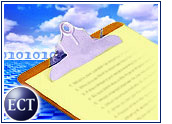

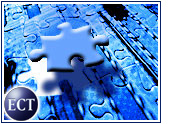

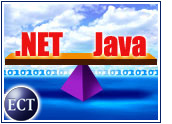





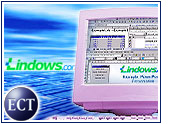
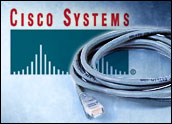
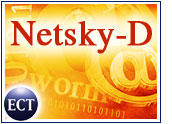

































Social Media
See all Social Media